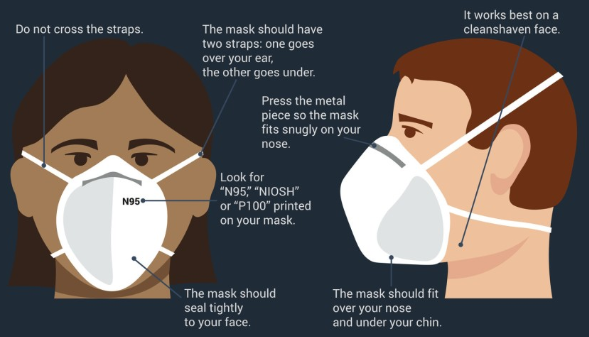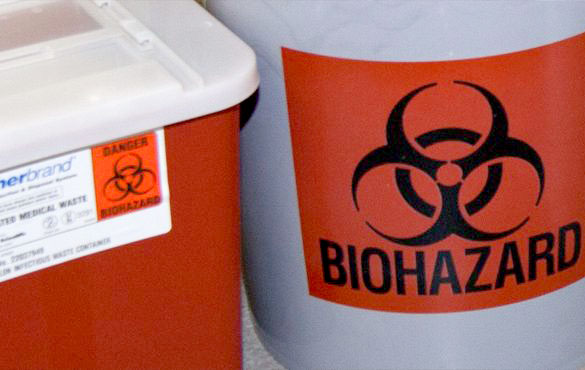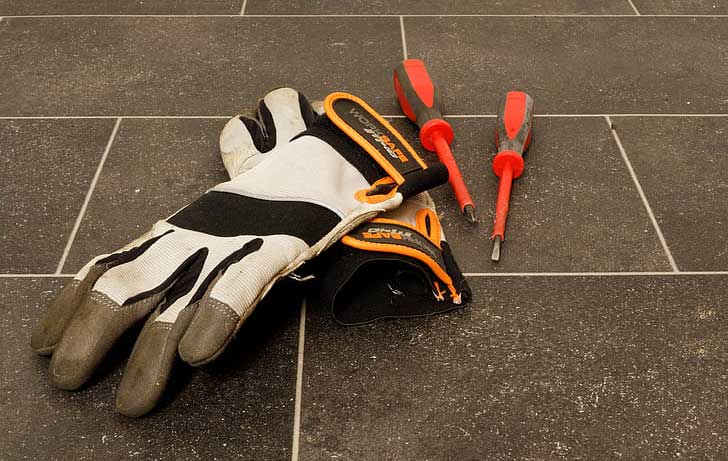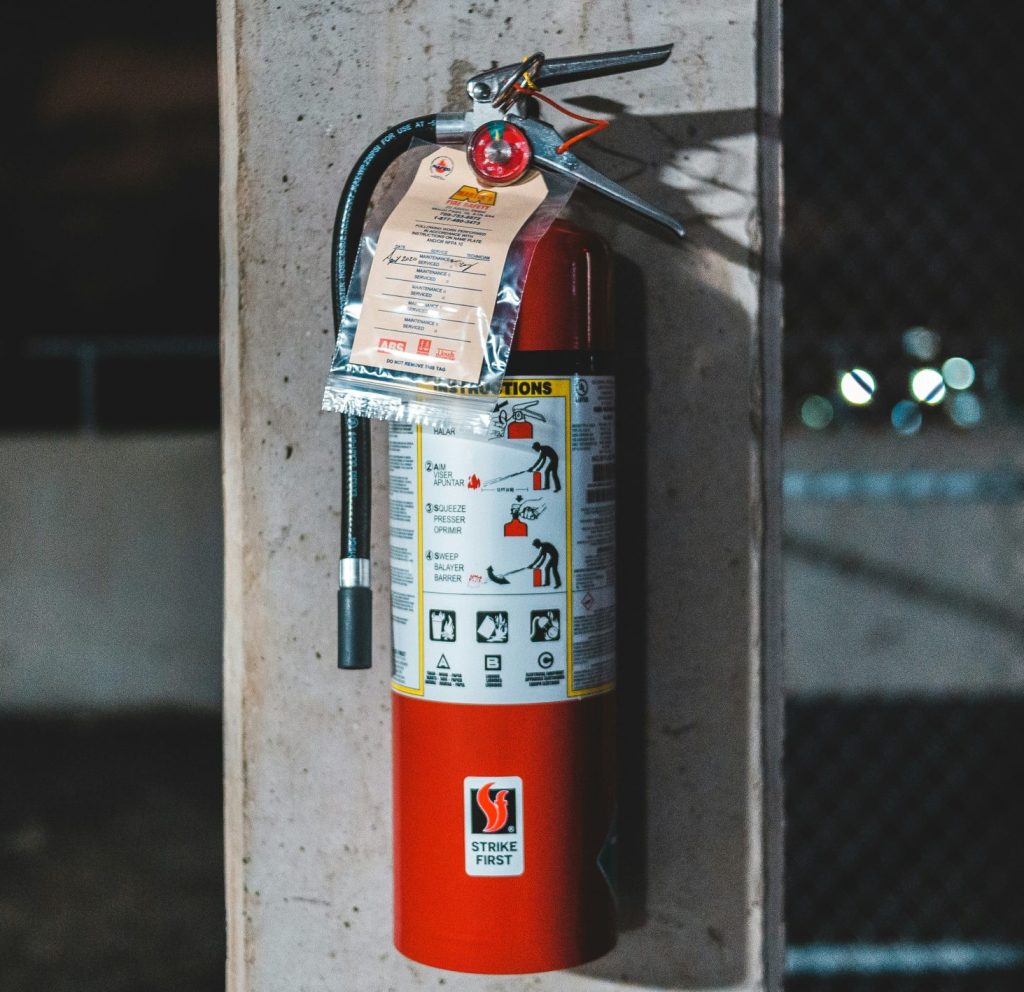Personal Protective Equipment (PPE)
Workplace hazards should be mitigated by engineering controls, work practices controls, administrative controls, or a combination of all three, if at all possible. Personal protective equipment (PPE) may be used in conjunction with these controls, if needed, but PPE should not be the primary means to control a hazard. PPE includes all clothing and accessories designed to protect against safety and health hazards. It must be provided if there is a potential for your staff to:
- Encounter hazards to the eyes, face, head, feet, or hands
- Conduct work involving electrical or fall hazards
- Enter into an active construction area
Faculty, staff, and students are responsible for wearing PPE to protect themselves from injury in the workplace. However, the lab director (faculty/lab manager/supervisor) is responsible for ensuring the proper safety equipment is available in your work area and making sure everyone understands how to properly use it.
NOTE: EHS administers programs for prescription safety eye-wear and respiratory protection for the U-M community
Standard Operating Procedures, Guidelines, and Manuals
- Personal Protective Equipment, General
- Hearing Conservation Guideline
- Respiratory Protection Guideline
Supplemental Information
University of Michigan Standard Practice Guide 201.45, Protective Clothing and Equipment
- Eye and Face Protection
- Head Protection
- Foot Protection
- Hand Protection (Gloves)
- Skin Protection (other than hands)

Proper Use for N95 Masks
A critical aspect of working safely with hazardous materials is the proper selection and use of PPE. Factors that affect PPE selection include the:
- Nature of the materials being used
- Route and duration of potential exposure (ingestion, inhalation, injection, or dermal contact)
- Type of operation and equipment involved
- Available engineering controls
Use the UM PPE Hazard Assessment to:
- Determine the hazards and potential hazards associated with a task, machinery, or process
- Select PPE to ensure that it is appropriate for the hazards present and that the users will be able to perform their work in reasonable comfort wearing the protective equipment
Standard Operating Procedures, Guidelines, and Manuals
For assistance or questions regarding the selection of PPE for a given task, or to report a change in the task, contact your EHS representative at ehsanswers@umich.edu.
To request prescription safety glasses you must complete and submit the Prescription Safety Glasses Request Form for each of your staff needing this PPE.
NOTE: U-M Health System staff should contact Safety Management Services (SMS) at (734) 764-4427 to request safety glasses.
Standard Operating Procedures, Guidelines, and Manuals
Non-Prescription Safety Glasses
You may order non-prescription safety glasses through M-Marketsite. Prior to ordering, “shop” for non-prescription safety glasses using the M-Marketsite Browse Only Web page. To access this page:
- Go to the UM home page and click Wolverine Access.
- Click M-Marketsite Browse Only.
- Click OK.
- Click a vendor, such as Fisher Scientific or Grainger, to browse for non-prescription safety glasses.
Over-the-Glass Safety Glasses
Another option for your staff wearing prescription glasses is over-the-glass safety glasses. These afford individuals the protection of a safety glass while allowing them to wear their normal glasses. This is a great option for individuals who have difficulty wearing prescription safety glasses or just prefer the convenience of having their personal glasses available at all times. There are many comfortable options available. For more information Contact EHS at safetyglasses@umich.edu.
Supplemental Information
All employees needing respiratory protection must be enrolled in the U-M Respiratory Protection Program. Respirators are provided by EHS to eligible:
- Faculty
- Staff
- Teaching Assistants
- U-M-paid Graduate Research Assistants
- U-M paid Work Study Students
Questions about respiratory protection can be directed to EHSRespirator@umich.edu.
Standard Operating Procedures, Guidelines, and Manuals
Respiratory Protection Guideline
Supplemental Information
University of Michigan Standard Practice Guide 201.45, Protective Clothing and Equipment
Medical Surveillance
Individuals needing a respirator must first undergo a medical evaluation. Using a respirator may place a physiological burden, psychological burden¸ or both on faculty, staff, or students that varies with the type of respirator worn, the job and workplace conditions in which the respirator is used, and the medical status of the individual. Individuals needing a respirator must complete and submit the Medical Surveillance Request Form to be scheduled for medical evaluation.
Fit Testing and Training
Individuals that obtain medical clearance to wear a respirator will be scheduled for a fit test and training session at EHS. Users will be given the opportunity to select their respirator and be fit tested to ensure proper fit for the best protection. Training on the proper use, storage, maintenance and limitations will be provided. Required users of respiratory protection must be fit tested and trained annually. Users of tight-fitting respirators must be clean shaven while wearing the respirator
Safety Glasses with Respirators
Sight-impaired respiratory protection users must be fitted with prescription glass inserts for use inside full-facepiece respirators. Individuals will be provided with safety prescription eyewear through the University Prescription Eyewear Program. Refer to the document Obtaining Prescription Safety Glasses.





